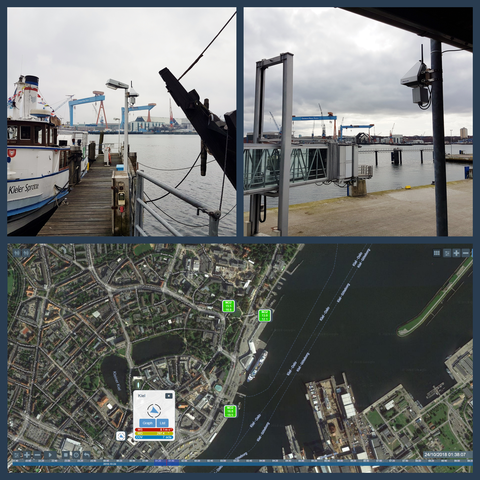Olfasense supports Port of Kiel with air quality measurements around cruise ship terminal

In a joint project with Eurofins, Olfasense has been involved in measuring overall emissions of nitrous oxides and fine particles around the Kiel cruise terminal on behalf of the PORT OF KIEL.
Measuring the influence of cruise ship emissions on the city’s air quality
The City of Kiel has become one of the most important German cruise ports in recent years. After the official end of the 2018 season, Kiel can look back at 166 visits by 33 different cruise ships, and a record-breaking number of some 600,000 cruise ship passengers.
These numbers come along with a recurring discussion on the influence of cruise ship emissions on the air quality of Kiel, which is regularly exceeding the annual mean limit value for NO2 at official monitoring stations.
The joint project, which studied NO2 and PM emission levels around the Kiel cruise ship terminal over several months, showed that these cruise ship emissions are scarcely detectable and that there is hence no connection with the high emissions registered on the city’s official monitoring stations.
Real-time sensor readings for NO2 and PM measurements
Olfasense has been using small-sensor air quality monitors (pods) by the company AQMesh. These pods measured the gases NO, NO2, O3 using the latest generation of electrochemical sensors. A light-scattering optical particle counter measured particulates PM1, PM2.5, and PM10. Additionally, relative humidity, pod temperature, and atmospheric pressure were logged.
In order for the AQMesh sensor systems to provide the greatest degree of accuracy, a scaling process was implemented. To do so, the pre-calibrated sensor systems were referenced with co-located passive samplers under the actual local environmental conditions at different time points. The passive samplers were sent to an accredited laboratory for evaluation. With these results, the evaluation algorithms of the AQMesh sensor systems were adjusted accordingly so that they could provide even more accurate measurement results.
Data visualisation in Ortelium for rapid access to the most valuable information
By integrating the sensor systems into our Ortelium atlas, the PORT OF KIEL was able to see in real time how emission levels changed during arrival, berthing and departure times.
We added meteorological data feeds, providing a better and immediate understanding on the influence of certain meteorological conditions on the sensor readings. What’s more, a customized split sensor viewer gave rapid access to the most valuable information, namely that even elevated sensor readings did not lead to exceedance of mean limit values.
Do you want to create your own dynamic air quality map? Contact us for a tailor-made online demo of how Ortelium enables you to take timely and appropriate action to improve your urban emission management.
Contact: Christoph Mannebeck, cmannebeck@olfasense.com, +49 431 220 12 20

